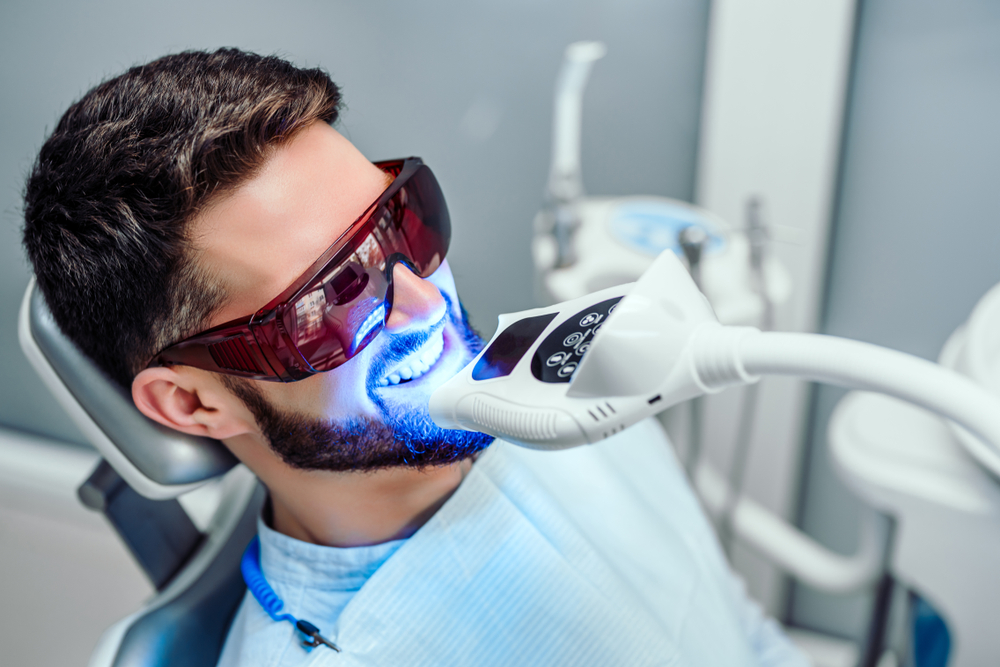What is Professional Teeth Whitening?
Professional teeth whitening, also known as in-office teeth whitening, is a process done by a cosmetic dentist to dramatically whiten and brighten your smile. During a professional whitening session, the dentist will apply a high-concentration peroxide-based gel to your teeth and use a specialized light to activate the whitening gel. This enables the gel to penetrate deep into the teeth to lift away years of discoloration and stains from coffee, wine, smoking, and other habits. The results are seen instantly, and teeth can become up to eight shades whiter in just one 30-60 minute treatment.
Professional whitening provides the fastest and most dramatic whitening results compared to at-home kits. With the guidance of Dr. Gabriel, professional whitening safely whitens teeth while keeping the integrity of enamel intact. The high-concentration whitening gel is carefully monitored and applied by Dr. Gabriel to avoid sensitivity or other side effects from whitening procedures. He will also customize the treatment based on your goals and level of staining.





